The investigative journalism website said these projects are worth a total €2.6 billion and require a further €1.4 billion of investment in order be completed, which means most of them are destined to remain shelved for the foreseeable future.
In July, we wrote about the hotel that hasn't seen a guest in 61 years and the hospital which, despite work on it beginning in 1957, has yet to treat a patient.
So we decided to come up with some more examples of unfinished projects.
Below is a round-up of our favourite 'ghost' buildings in Italy and the incredible stories behind them.
Giarre's polo stadium – Sicily
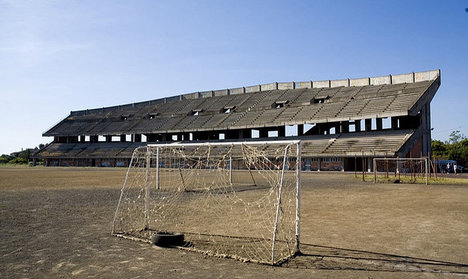
The unfinished polo stadium at Giarre. Photo: Incompiuto Siciliano/Flickr
Quite why the Sicilian town of Giarre decided its 27,000 residents needed a 20,000-seater polo stadium is anyone's guess. Polo is not a popular sport in Italy.
Nonetheless, the local government launched the project in 1985 in order not to miss out on regional funds. As of today, the project is half complete, after works began and stalled repeatedly.
But all is not lost: children use the unfinished pitch as a good spot for a kickabout, while in the evening joggers can be seen doing laps of the athletics track. However, the stands are always empty and are slowly being consumed by vegetation.
The closest thing to a game of polo the stadium has ever seen came in 2012 when a group of youngsters decided to organize an ironic polo match, which they played on sticks with cardboard horse heads attached.
The small town has something of a penchant for unfinished projects – the polo stadium sits next door to an incomplete and empty swimming pool, bizarrely built a couple of meters smaller than Olympic size.
Lecco youth hostel – Lombardy
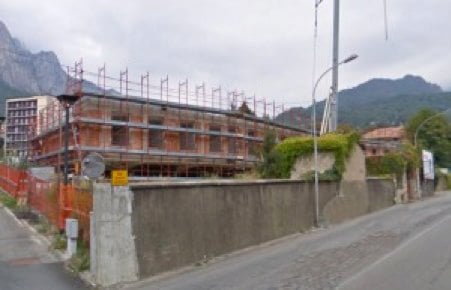
The unfinished hostel in Lecco. Photo: Giacomo Reali/Wikimedia
Plans to build a large 200-bed hostel in Lecco, Lombardy, in order to boost tourism in the surrounding area seemed like a good idea. The area is steeped in history and surrounded by the beautiful Bergamo Alps. What could go wrong?
The first stone was eagerly laid in 2006, and in spite of the council paying €2.6 million to a private company to finish the job – the hostel is incomplete and abandoned.
A recent plan to turn the building into a university dormitory stalled and the local council is now searching for private investors to provide the funds required to finish the job.
Città Dello Sport Tor Vergata – Lazio

The extravagant sail makes the waste all the more obvious. Photo: Luca Cerabono/Flickr
Planned as a massive indoor sports complex that would host part of the 2009 World Swimming Championships, the proposed site, near Rome, boasts a half-complete sports arena with 8,000 seats and a half-built Olympic swimming pool with space for 3,000 spectators.
The project was launched with great expectations in February 2006. The Spanish architect, Santiago Calatrava, designed a gigantic sail as the roof for the complex, which today only makes its failure more conspicuous.
The project was blighted by spiralling costs. Initially the council set aside €240 million to complete the works but it is now looking for a further €400 million from private investors to finish the complex.
The Giunza tunnel – Umbria/Marche
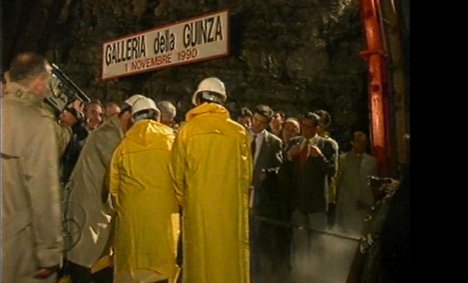
The premature opening of the tunnel in 1990. Photo: Giacomo Reali/Wikimedia
The Giunza tunnel is a 5.96km tunnel connecting Umbria and Marche on the E78, the super highway that connects the east and west coasts of Italy.
Planning on this great engineering feat began in the 1970s and by 2004 more than 500 billion lire had been spent on the project. The tunnel is largely complete and even received a opening party in 1990, at a cost 300 million lire.
But the party proved premature as the tunnel has never actually been opened to the public, who are still waiting until the money required to finish the project can be found.
After 40 years, nobody is holding their breath.
La Maddalena's G8 Hotel

Unused equipment in the luxury hotel's gym. Photo: Screengrab/Corriere TV
La Maddalena is a small island off the north coast of Sardinia, which between 1972 and 2008 made most of its money by hosting a base for US nuclear submarines off its shores.
When this practice finished in 2008 it was decided that the best way for the island to replace its lost revenue was through tourism.
To help La Maddalena, former Prime Minister Silvio Berlusconi chose the island as the location for the 35th G8 summit, which was hosted by Italy in 2009.
Work immediately started on an ambitious project to transform the island's old arsenal into a luxury hotel complex.
An estimated €460 million was invested into the hotel, which was to include space for 600 boats, gleaming marble bathrooms, modern artistic sculptures and a fully equipped gym.
But at the last minute the destination for the G8 summit was moved to L'Aquila as a symbolic gesture following the earthquake which destroyed the city on April 6th 2009.
La Maddalena was left with a largely furnished luxury hotel, but problems soon started to appear.
The accounts didn't balance and a number of people working on the project were arrested for stealing funds.
Further complications arose as to who actually had responsibility for the site.
But after the town of Maddalena finally trumpeted its desire to finally finish the project earlier this year, tragedy struck: a fire tore through the hotel in March, sending any money invested quite literally up in smoke.
Italy is not the only European country with an embarrassing backlog of incomplete projects.
Spain’s building bonanza left the country with a vast array of half-finished monstrosities and pointless prestige projects.
Take a look: Spain's craziest building fails

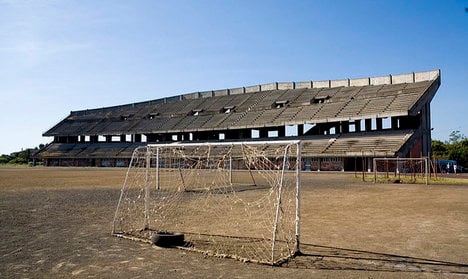
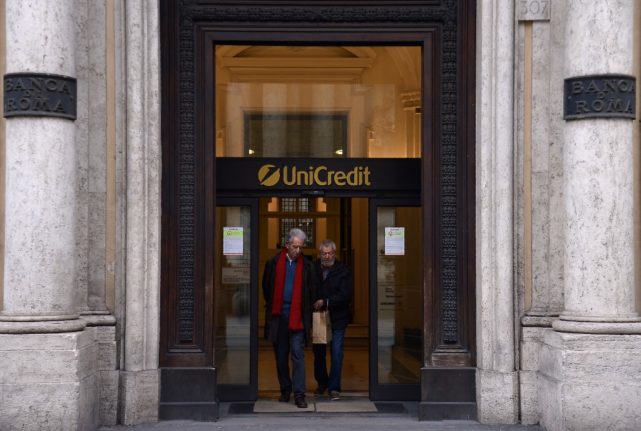


 Please whitelist us to continue reading.
Please whitelist us to continue reading.
Member comments